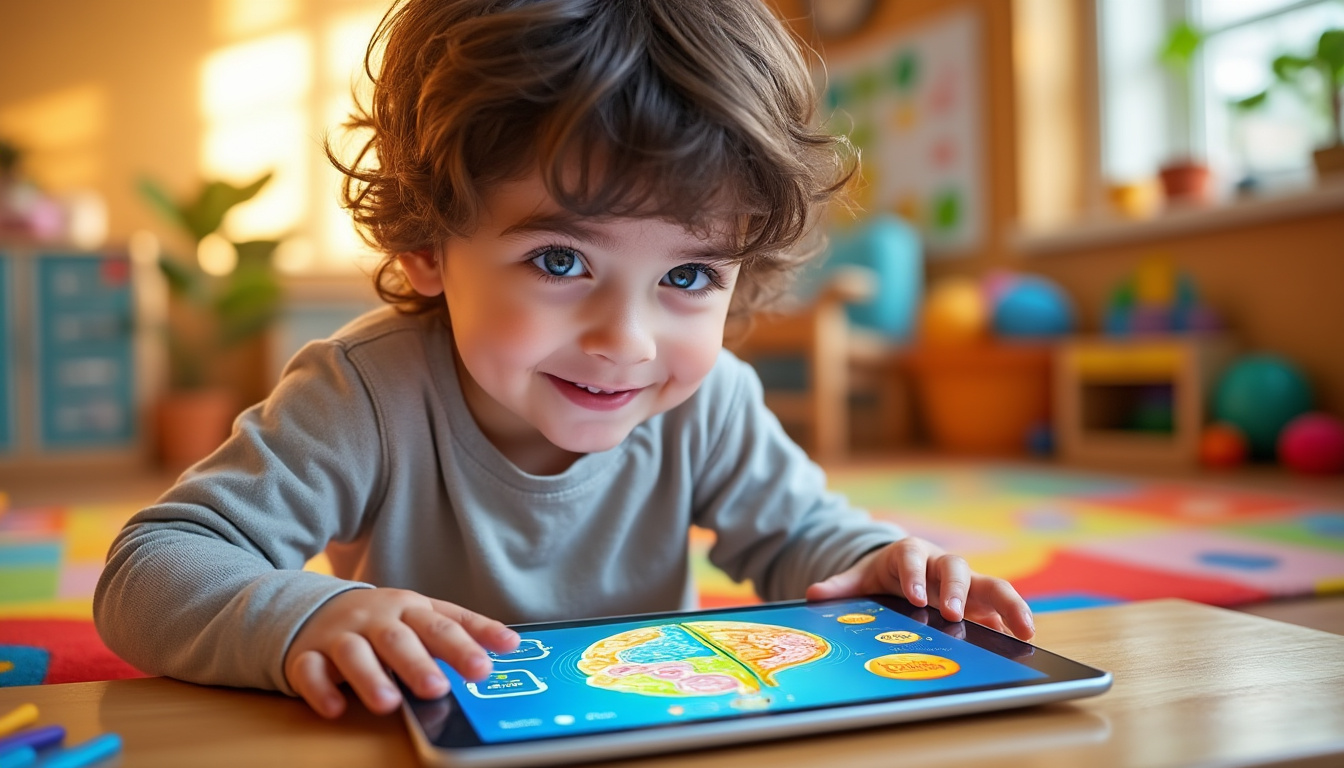In a world where technology is transforming our daily lives, children with ADHD now benefit from innovative digital tools that shed new light on how their brains work. These devices are designed to help these young people understand and better manage their cognitive challenges. As neuroscience research advances, promising results are emerging regarding the use of digital tools capable of providing real-time feedback on brain activity.
ADHD and Its Cognitive Challenges: An Overview
Attention Deficit Hyperactivity Disorder (ADHD) affects a large number of children around the world. Children with this condition often experience difficulties related to attention, impulsivity, and organization. These problems are not simply maladaptive behaviors, but rather reflect difficulties related to their brain’s executive function.
Attention deficits can impact their ability to listen to instructions, multitask, or remember important information. To better understand these challenges, it is essential to understand the main manifestations of ADHD:
- Difficulty concentrating: Children may have difficulty focusing on a given task, even if it interests them.
- Impulsivity: They may be quick to interrupt, speak without thinking, or act unpredictably.
- Organizational problems: Difficulty managing time, planning activities, or staying organized for schoolwork.
- Emotional variability: Mood swings may occur, affecting their ability to interact with others.
To address these challenges, innovative approaches are crucial. This is where digital tools using advanced neurofeedback and feedback techniques come in.
Understanding Brain Functions with Digital Tools
Technological advances make it possible to access real-time brain data, opening the way to solutions that were previously unimaginable. A research project led by scientists at Stanford University has developed a wearable device that provides children with instant feedback on their brain activity. These devices measure blood oxygenation in different brain regions, providing clues about cognitive activity.
Participants, equipped with a lightweight sensor placed on their heads, perform simple cognitive tasks while receiving visual feedback. This feedback allows them to see in real time how their brain is reacting as they try to focus, representing a powerful means of awareness. The idea is to provide them with information about their own brain to help them better manage their emotions and attention.
In this context, it is useful to set up a feedback chart based on brain activity:
| State of brain activity | Recommended action | Visual feedback provided |
|---|---|---|
| High activity | Focus on a simple task | Image of success (e.g., medals) |
| Moderate activity | Incorporate reflection breaks | Image of a light bulb (idea) |
| Low activity | Resume another task or take a break | Image of a cross (mistake) |
This method not only improves children’s self-understanding but also offers them practical strategies to better manage their condition.
Success stories with digital tools
Recent initiatives show that these digital tools can truly transform the lives of children with ADHD. Programs are currently being tested in various schools, where the use of technologies such as NeuroKids and CognitiveSpark has led to significant results.
The tools are often accompanied by training for teachers, allowing them to integrate these technologies into their daily educational practices. The results clearly demonstrate that the adoption of such tools results in significant improvements. Here are a few examples:
- FocusUnique: This program helps children stay focused by using educational games that react to their brain activity.
- MindMap: An application that allows children to visualize their thoughts and organize their ideas while receiving real-time feedback on their attention levels.
- ‘ADHD Mentor’: A digital support tool that offers personalized advice based on children’s cognitive profiles.
Experiments conducted in schools report positive trends in concentration and academic performance. By 2025, the use of these tools is expected to become widespread, while continuous improvements are being incorporated to optimize their effectiveness.
Feedback from teachers and parents
The adoption of these technologies is not without its concerns. Teachers and parents are often asked about the impact of digital tools on children’s overall development. Feedback indicates that these devices increase awareness, not only among children, but also among the adults around them.
Teachers report better student engagement in class, facilitated by interactive games that maintain their attention. On the other hand, parents are delighted to see their child taking more responsibility for their learning.
It is essential to create synergy between school and home. This can include regular meetings where parents, teachers, and healthcare professionals share information and share progress made using digital tools.
| Reaction | Source | Observed Impact |
|---|---|---|
| Greater engagement in class | Teacher of an ADHD class | Improved memory |
| Increased awareness | Parent of a student | Improved emotion management |
| Reduced anxiety | School psychologist | Better academic performance |
Future prospects for digital tools in education
As the use of digital tools spreads in schools and at home, the potential for integration into traditional education systems is promising. Researchers are considering improving these technologies to make them even more accessible and effective. Some companies are already focusing on creating personalized solutions. EduCortex, for example, is working on a platform that adapts exercises based on children’s responses, thus increasing engagement and retention.
Accessibility and cost are also becoming central issues in the future development of these tools. Work is underway to ensure these innovations are available to everyone, including disadvantaged communities. Here are some future directions:
Developing mobile applications for everyday use.
- Strengthening collaborations between schools, parents, and technology companies.
- Collecting and using the data collected to continuously improve the tools.
- Creation of ADHD education programs to raise awareness among teachers.
- The ultimate goal is to seamlessly integrate these technologies into education, allowing children to develop their skills while feeling supported and understood. This could lead to generations of children better prepared to face their challenges.
Changing Perceptions of ADHD Through Technology
One of the most exciting aspects of these technologies is their ability to change the way ADHD is perceived. With direct feedback and technological support, it becomes possible to shift from a stigmatizing view to an approach based on optimizing abilities.
Instead of viewing ADHD solely as a set of deficits, digital tools provide a framework in which children can discover their strengths. Adapted approaches can raise self-esteem over time and encourage self-compassion. Digital tools like BrainBuddy and AttentionPlus are therefore part of a positive movement to raise awareness and dispel misconceptions about ADHD. These initiatives don’t just inform; they truly transform lives.
Current Perception
New Perception Thanks to Technology
| ADHD as a Deficit | ADHD as a Cognitive Difference to Exploit |
|---|---|
| Sensitivity and Stigma | Open-Mindedness and Understanding |
| Little Access to Support | Access to Personalized and Adaptive Solutions |
| The journey toward integrating these digital tools is fraught with challenges, but the expected benefits represent a horizon of hope for children with ADHD. |




